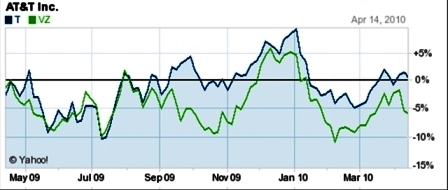This was originally posted in February 2008. I decided to move it back up to the top of the list given that the DJIA is being changed again. This time Citigroup and General Motors are being removed from the list, effective June 8, 2009, to be replaced by Travelers (insurance carrier and previously a division of Citigroup) and Cisco Systems.
PREVIOUSLY POSTED FEB 2008:
The Dow Jones Industrial Average (DJIA) is an index of 30 of the largest blue-chip American companies. It was created as a list of 12 stocks in 1896 and grew to 30 in 1928. The editor of the Wall Street Journal is responsible for periodically changing DJIA components in an effort to better match the average with the overall economy. Yesterday it was announced that two companies on the list, Altria Group and Honeywell, would be replaced with Bank of America and Chevron. The changes will take place next Tuesday, the 19th (2008).
Although the DJIA is arguably still the most watched market index, a number of points can be made that the index is outdated:
1. The index is somewhat arbitrary. DJIA components don't necessarily accurately represent the broader market. Why hasn't Bank of America been on the list before? Disney, McDonald's, Coca-Cola and Home Depot are on the list, but Apple, Google, Cisco and Starbucks are not. How come? Even Warren Buffett's Berkshire Hathaway, a Fortune 20 company, is not on the list.
2. The index is price-weighted. This means they simply add up the stock prices of the 30 components and divide it by a factor that takes into account stock splits, changes in the index, etc. As a result, a change in a $100 stock is treated the same as in a $20 stock.
As an example, let's say IBM is at $100 and Intel is at $20 per share. IBM is down $5 today while Intel is up $5. The DJIA doesn't change because the +$5 is offset by the -$5. However, if you owned $100 worth of each stock (1 share of IBM and 5 shares of Intel), you would be up by $20 (IBM down by $5 and Intel up by 5 shares x $5). So you are up 10% on your investment but using a price-weighted average says you are break-even.
3. Why just 30 stocks? 30 stocks may have been adequate 80 years ago, does it really represent a reasonable cross-section of the 11,000+ stocks currently traded in the U.S.? Seems to me that the S&P 500 and other major market indices better reflect our economy.
4. The DJIA ignores dividend payments. This is not unique to the DJIA average but certainly is an important aspect to investing in stocks. According to Stanford researchers, DJIA dividend payments have averaged nearly 5% since 1928, ranging from under 2% to nearly 10%. The DJIA does not give a complete reflection of total shareholder returns as a result.
Still, I will continue to check out the day to day gyrations of the DJIA out of sheer habit and interest as will most of you!







